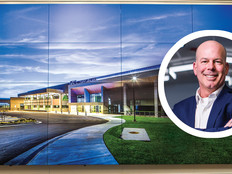EDTECH: As schools continue to face tough choices about in-person versus remote learning, what does student engagement look like in today’s education environment?
DEL MAR: As I talk with end users of our products — including teachers and administrators — we’re asking ourselves questions: Is the physical classroom going away? What’s happening with one-to-one devices? What challenges are parents, students and educators facing?
We’re seeing that the design of physical classrooms is changing to be conducive to a more active engagement style that is defined by both cognitive attention and emotional involvement. Students aren’t just learning independently; they’re also learning as a group and learning from one another. And displays, of course, are a portal to information, and they play an important role in supporting engagement in classroom spaces, whether learning is in-person or virtual.
Front-of-the-classroom interaction is not going away. There is a need, particularly for K–6 students, for the ability to come to the board and show what they’ve learned and what they’re working on. However, technology is also shifting to adapt to the modular design and to one-to-one devices, increasing the need for device-to-display sharing.
KEEP READING: Innovation and collaboration permeate conversations at FETC in 2022.
EDTECH: How do Epson laser projectors support student engagement?
DEL MAR: Our BrightLink projector series caps image size at 100 inches because we want to optimize interactivity without losing the ability to use the whiteboard space, which is precious to teachers. Teachers and students need to be able to write or interact with the content at the display. If you don’t need interactivity, you can get up to 500 inches of image size from a mid-range projector and feel confident that students in the back of the room can read and view the content.
The ability to split the projected image on the display also helps with engagement in remote and in-person settings. Teachers can play a video or display an image on one side and take notes on the other side. It’s easy for students to share what they’re working on from their laptops or tablets because you can connect multiple devices wirelessly to the projector.
I think that over time, those features are going to become more important. They all support the seamless integration of devices to displays for different types of interactivity, be it at the board or at students’ desks.
EDTECH: Where have you seen schools using laser projectors to measurably support engagement and collaboration?
DEL MAR: Des Moines Public Schools in Iowa (with a student population of 31,000) is a good example. District leaders wanted to create a learning environment that would be similar to what students may encounter in college or future careers, and they wanted to inspire collaboration, specifically on STEM concepts.
Students at Des Moines Public Schools work independently on their own technical drawings using different software to design a prototype, and they use the interactive features of our BrightLink laser projector to present their ideas to the class. Students can annotate one another’s drawings to share feedback or notes, and then the prototypes get printed on a 3D printer.











